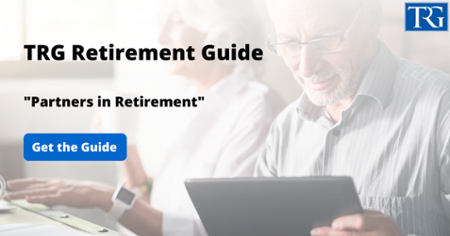Kaiser Permanente is one of the largest not-for-profit health systems in the United States, known primarily for its innovative healthcare model. However, behind the scenes, the organization also offers employees a broad range of benefits—an important aspect of which is retirement planning. In order to streamline administration and leverage best-in-class tools for its workforce, Kaiser Permanente partners with Fidelity Investments as the recordkeeper for certain retirement plans, including 401(k), 401(a), and 403(b) plans.
“You can view your retirement plan contributions and manage investments directly through Fidelity NetBenefits.” (My HR Kaiser)
This quote from Kaiser’s internal portal highlights how Kaiser Permanente relies on Fidelity’s NetBenefits system to provide day-to-day account management. As plan sponsor, Kaiser Permanente decides whether employees are eligible for matches, how vesting schedules work, and which mutual funds or target-date funds will be available.
Why the Partnership Matters
Retirement plans require consistent monitoring, complex regulatory compliance, and seamless account servicing. For large employers like Kaiser, outsourcing these administrative tasks to a financial services expert is a logical move. Fidelity Investments brings extensive experience in managing corporate retirement plans—handling recordkeeping, issuing statements, and offering easy-to-use technology. This partnership lets Kaiser Permanente concentrate on overall plan strategy, while Fidelity handles the daily logistics.
“Fidelity manages recordkeeping for all contributions, balances, and investment elections.” (KP Benefits Central)
According to KP Benefits Central, Kaiser Permanente employees benefit from Fidelity’s role by gaining access to robust online and phone-based support for account questions. This means everything from enrolling in the plan to changing contribution rates can be done through a single, user-friendly portal.
Kaiser Permanente’s Role as Plan Sponsor
While Fidelity handles the administrative and technical side, Kaiser Permanente maintains ultimate authority over plan design. As plan sponsor, it establishes:
-
Plan Type: Determining which form of tax-advantaged plan to offer (401(k), 403(b), or 401(a)).
-
Contributions & Matches: Deciding whether (and how much) employer matching is provided.
-
Vesting Schedules: Outlining how long employees must remain with Kaiser to access employer contributions.
-
Investment Lineup: Selecting which types of mutual funds, index funds, or target-date funds will be part of the plan’s offerings.
When employees are ready to check their balances, review historical performance, or make adjustments to their allocations, Fidelity’s NetBenefits platform allows for quick, centralized access.
Fidelity’s Responsibilities
Fidelity Investments functions in several critical areas to aid in a smooth and compliant operation of Kaiser’s plans:
-
Recordkeeping: Tracking every dollar contributed, any employer match, and each participant’s chosen investments.
-
Customer Service: Providing phone and online support, helping employees with everything from fund selection to rollover inquiries.
-
Compliance & Reporting: Assisting with annual reporting requirements to the IRS and Department of Labor, thereby reducing Kaiser’s administrative burden.
“Fidelity Investments is listed as a service provider for Kaiser Permanente’s retirement plans.” (United States Department of Labor EFAST2 Portal)
By referencing the publicly available Form 5500 filings on the Department of Labor’s EFAST2 portal, it becomes clear that Fidelity is the designated recordkeeper. This regulatory documentation underscores the formal nature of the partnership.
Accessing Plan Information
For Kaiser Permanente employees, three primary resources offer detailed information about their retirement plans:
-
My HR Kaiser – Logging into myhrkp.org (with a Kaiser ID and password) provides personalized information on plan eligibility, contributions, and enrollment steps.
-
KP Benefits Central – At benefitsatkp.org, employees can find a broader overview of benefits, including Kaiser’s partnership with Fidelity for retirement.
-
Fidelity NetBenefits – By visiting netbenefits.fidelity.com, plan participants can manage ongoing contributions, select or modify investments, and review account balances.
Final Thoughts
Kaiser Permanente’s collaboration with Fidelity is a straightforward illustration of a high-performing organization partnering with a major financial services provider. It combines Kaiser’s role as plan sponsor—focusing on plan design and contribution structures—with Fidelity’s specialization in recordkeeping, compliance, and customer-facing support. In practice, this means employees gain reliable access to a robust retirement plan that is both well-managed and easy to navigate.
By leveraging Fidelity’s NetBenefits platform and knowledge, Kaiser Permanente can aid its workforce readily monitor, manage, and plan for their financial futures—all with the support of a well-established industry leader.
Sources:
Kaiser Permanente. “My HR Kaiser.” Official Kaiser Permanente Employee Portal,
https://www.myhrkp.org/. Accessed 7 Feb. 2025.
Kaiser Permanente. “KP Benefits Central.” Kaiser Permanente,
https://benefitsatkp.org/. Accessed 7 Feb. 2025.
Fidelity Investments. “Fidelity NetBenefits.” Fidelity,
https://netbenefits.fidelity.com/. Accessed 7 Feb. 2025.
United States Department of Labor. “EFAST2 Portal.” U.S. Department of Labor,
https://www.efast.dol.gov/portal/app/disseminate?execution=e2s1. Accessed 7 Feb. 2025.
